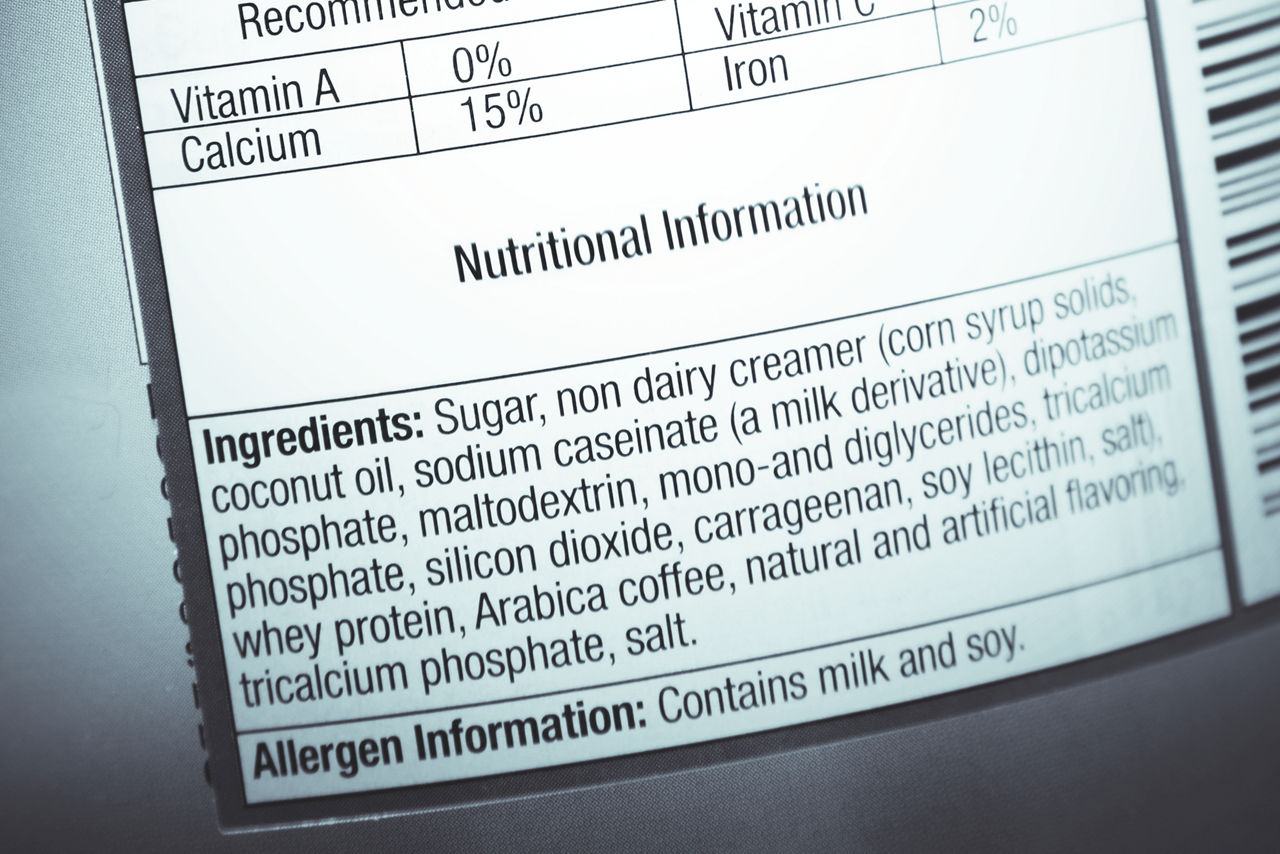The small print
Understanding labels and ingredient lists
If your baby has a food allergy, you can’t afford to skim over the details, which is why it is so important to have an understanding of food labelling.
The small print
Understanding labels and ingredient lists
If your baby has a food allergy, you can’t afford to skim over the details, which is why it is so important to have an understanding of food labelling.

Part of managing your baby’s allergy involves reading ingredient labels and having a solid understanding of what they mean.
If your baby has been diagnosed with a food allergy, knowing exactly what’s in ready-made or pre-packed foods is essential when it comes to making informed choices in the supermarket. As such, reading ingredient labels is very important, even for foods that you might not expect to contain the allergen you need to avoid.
At first, the thought of checking the food labels on everything you buy might seem daunting, but rest assured that it’ll soon become second nature.
Food labelling is there to help you make the right choices. Ingredients must be clearly listed on packs to make it easier for people with allergies to identify the ingredients they need to avoid.
 Checking the food labels on everything you buy might at first seem daunting, but it’ll soon become second nature
Checking the food labels on everything you buy might at first seem daunting, but it’ll soon become second nature
A lot of packaging also carries advisory labelling. You’ll know this better as the ‘may contain’ message on items such as breakfast cereals, biscuits, and packets of nuts. This phrase is often used by manufacturers as a warning.
Despite being there to help us, food labelling can sometimes be confusing, with several different names being used for one common allergen. For example, the following terms are just some of the ways milk, and milk extracts may be labelled on food packaging:
In addition, some products sound like they might contain milk or dairy but actually don’t, for example coconut cream or almond milk.
However, allergenic ingredients must always be highlighted every time they appear in the ingredients list, most commonly listed in bold, and they must be declared with a clear reference to the allergen making sure the information is clear and easy to understand1.
If you find food labelling a bit confusing, you could always start by looking online at the ‘free from’ lists many supermarkets such as Sainsbury’s, Tesco, Morrisons, Waitrose and Asda have. Whilst it’s worth remembering that some of the foods on the lists will not be suitable for babies, they can give guidance on what’s in certain products and can help to make your shopping trips easier once your baby is ready for them.

Our nutritionists and feeding advisors are always on hand to talk about feeding your baby. So if you have a question, just get in touch